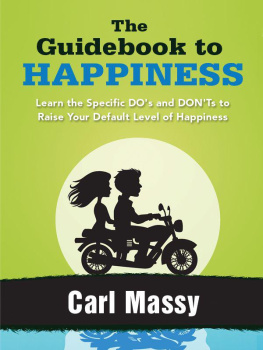Since the World Economic Forum (WEF) was founded in 1971, its annual meeting in Davos has served as a useful indicator of the global economic zeitgeist. These conferences, which last a few days in late January, bring together corporate executives, senior politicians, representatives of NGOs and a sprinkling of concerned celebrities to address the main issues confronting the global economy and the decision-makers tasked with looking after it.
In the 1970s, when the WEF was still known as the European Management Forum, its main concern was slumping productivity growth in Europe. In the 1980s, it became preoccupied with market deregulation. In the 1990s, innovation and the internet came to the fore, and by the early 2000s, with the global economy humming, it began to admit a range of more social concerns, alongside the obvious post-9/11 security anxiety. For the five years after the banking meltdown of 2008, Davos meetings were primarily concerned with how to get the old show back on the road.
At the 2014 meeting, rubbing shoulders with the billionaires, pop stars and presidents was a less likely attendee: a Buddhist monk. Every morning, before the conference proceedings began, A few hundred thoughts of stock portfolios and illicit gifts for secretaries back home most likely meandered their way across the mental pastures of his audience.
True to their competitive business principles, the Davos organizers had not just gone for any monk. This was a truly elite monk, a French former biologist named Matthieu Ricard, a minor celebrity in his own right, who acts as French translator to the Dalai Lama and gives TED Talks on the topic of happiness. This is a subject he is uniquely qualified to speak on, thanks to his reputation as the happiest man in the world. For a number of years, Ricard participated in a neuroscientific study at the University of Wisconsin, to try and understand how different levels of happiness are inscribed and visible in the brain. Requiring 256 sensors to be attached to the head for three hours at a time, these studies typically place the research subject on a scale between miserable (+0.3) and ecstatic (-0.3). Ricard scored a -0.45. The researchers had never encountered anything like it. Today, Ricard keeps a copy of the neuroscientists score chart on his laptop, with his name proudly displayed as the happiest.
Ricards presence at the 2014 Davos meeting was indicative of a more general shift in emphasis from previous years. The forum was awash with talk of mindfulness, a relaxation technique formed out of a combination of positive psychology, Buddhism, cognitive behavioural therapy and neuroscience. In total, twenty-five sessions at the 2014 conference focused on questions related
Sessions such as Rewiring the Brain introduced attendees to the latest techniques through which the functioning of the brain could be improved. Health Is Wealth explored the ways in which greater well-being could be converted into a more familiar form of capital. Given the unique opportunity of having so many of the worlds senior decision-makers in one place, it is no surprise that this was also the scene of considerable marketing displays, by companies selling devices, apps and advice aimed at supporting more mindful and less stressful lifestyles.
So far so mindful. But the conference went further than just talk. Every delegate was given a gadget which attached to the body, providing constant updates to the wearers smartphone to assess the health of his recent activity. If the wearer is not walking enough, or sleeping enough, this evaluation is relayed back to the user. Davos attendees were able to glean new insights into their lifestyles and wellness. Beyond that, they were getting a glimpse of a future in which all behaviour is assessable in terms of its impact upon mind and body. Forms of knowledge that could traditionally be accrued only within a specialized institution, such as a laboratory or hospital, would be collected as individuals wandered around Davos for the four days of the conference.
This is what now preoccupies our global elites. Happiness, in its various guises, is no longer some pleasant add-on to the more important business of making money, or some new age concern for those with enough time to sit around baking their own bread. As a measurable, visible, improvable entity, it has now penetrated the citadel of global economic management. If the World Economic Forum is any guide, and it has always tended to be in the past, the future of successful capitalism depends on our ability to combat stress, misery and illness, and put relaxation, happiness and wellness in their place. Techniques, measures and technologies are now available to achieve this, and they are permeating the workplace, the high street, the home and the human body.
This agenda extends well beyond the reaches of Swiss mountaintops and has in truth been gradually seducing policy-makers and managers for some years. A number of official statistical agencies around the world, including those of the United States, Britain, France and Australia, now publish regular reports on levels of national well-being. Individual cities, such as Santa Monica, California, have invested in their own localized versions of this.
A growing number of corporations employ chief happiness officers, while Google has an in-house jolly good fellow to spread mindfulness and empathy.
Science is advancing rapidly in support of this agenda. Neuroscientists identify how happiness and unhappiness are physically inscribed in the brain, as the researchers in Wisconsin did with Matthieu Ricard, and seek out neural explanations for why singing and greenery seem to improve our mental As the statistical evidence in this area accumulates, so the field of happiness economics grows to take advantage of all this new data, building up a careful picture of which regions, lifestyles, forms of employment or types of consumption generate the greatest mental well-being.
Our hopes are being strategically channelled into this quest for happiness, in an objective, measurable, administered sense. Questions of mood, which were once deemed subjective, are now answered using objective data. At the same time, this science of well-being has become tangled up with economic and medical expertise. As happiness studies become more interdisciplinary, claims about minds, brains, bodies and economic activity morph into one another, without much attention to the philosophical problems involved. A single index of general human optimization looms into view. What is clear is that those with the technologies to produce the facts of happiness are in positions of considerable influence, and that the powerful are being seduced further by the promises of those technologies.



















